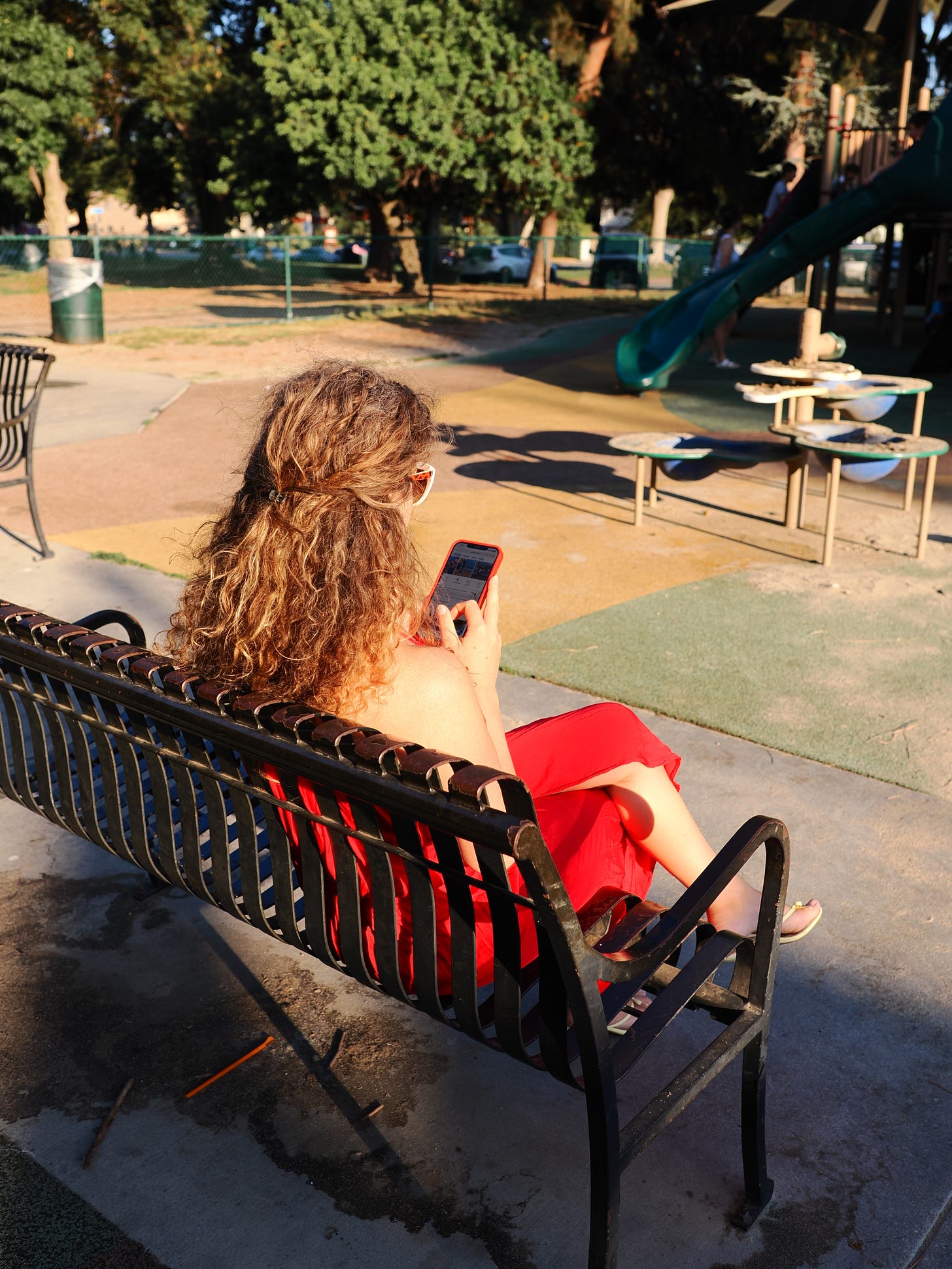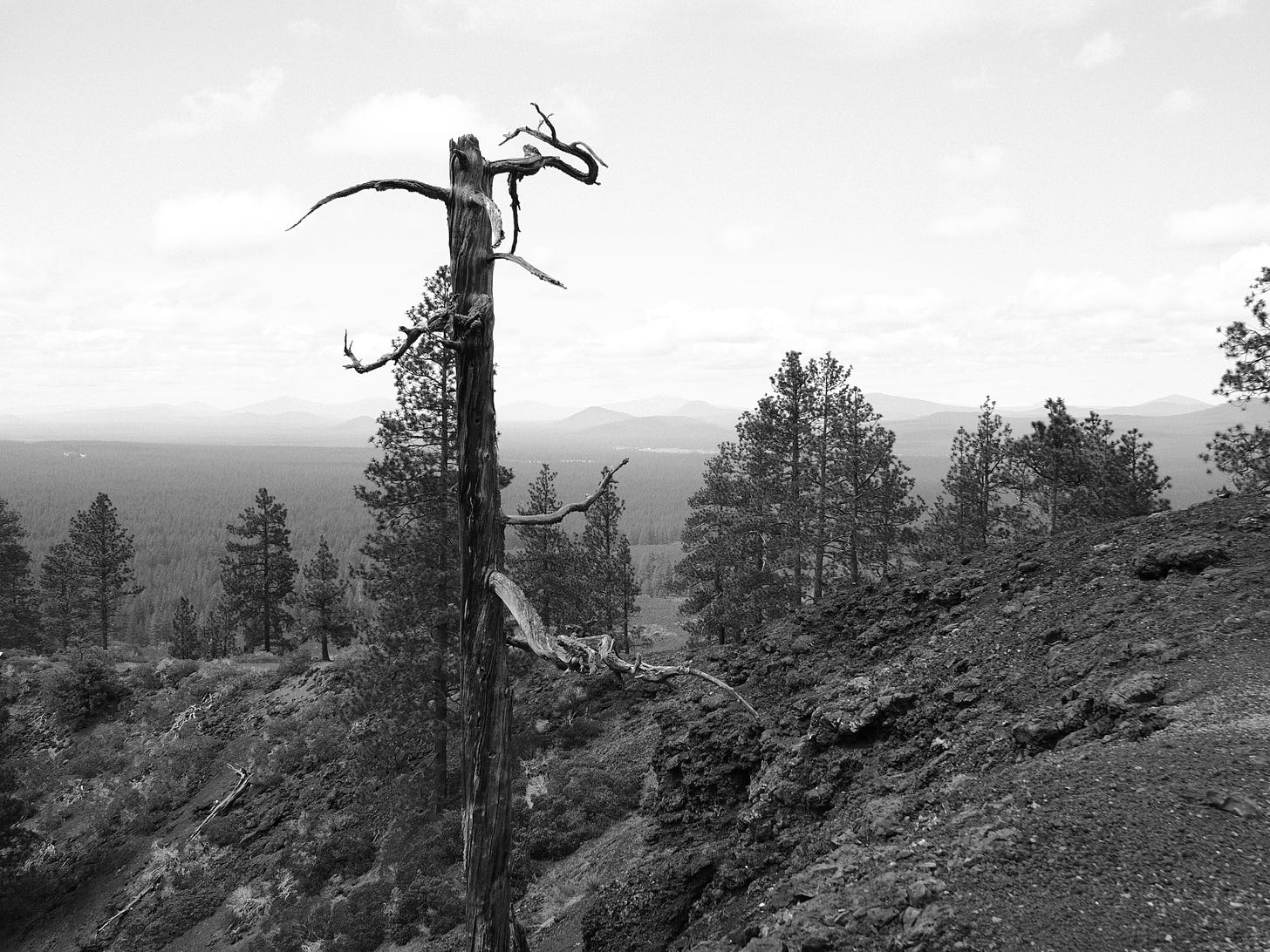5 JPEG Recipes for the OM System OM-3
A family trip, lost gear, and the joy of committing to color in-camera.
In my latest YouTube video, I walk through five custom JPEG looks I built for the OM System OM-3: four color profiles and one bold black and white. All were tested on a chaotic, beautiful family trip to Oregon.
Here I am going to do a full breakdown of all five JPEG profiles so you have an easy reference and understanding of how to go about setting them up. These recipes are built for straight-out-of-camera shooting using the Creative Dial and saved into Custom Modes (C1–C5) so you can flip between them like film stocks.
Recipe 1: OMTC Warm
Vibe: Golden, punchy, rich skin tones. A bit of that Kodak warmth.
Best for: Cool early morning or midday sun, beachy or dappled light, clean outdoor scenes
Avoid in: Indoor tungsten or golden-hour light. It gets too warm.
Creative Dial Position: Color
Color:
Color 1 (any color setting will be fine since we will be customizing)
Yellow +2
Yellow Red +2
Red +3
Pink 0
Magenta 0
Pink Purple 0
Blue Purple +4
Blue +2
Aqua +5
Green +3
Lime 0
Yellow Green -1
Curve:
Shadow -1
Midtone (press info button to access) +2
Highlight -2
Shading: 0
Sharpness: -1
Contrast: +2
White Balance:
Keep Warm Color - Off
Shift: WB Auto - A4, M1
Recipe 2: OMTC Cool (only change is WB Shift)
Vibe: Clean, neutral, contrasty but calm. Think Fuji Provia or 400H.
Best for: Sunset, travel, versatile light
Avoid in: Flat or overcast light. It can look a little lifeless.
Creative Dial Position: Color
Yellow +2
Yellow Red +2
Red +3
Pink 0
Magenta 0
Pink Purple 0
Blue Purple +4
Blue +2
Aqua +5
Green +3
Lime 0
Yellow Green -1
Curve:
Shadow -1
Midtone (press info button to access) +2
Highlight -2
Shading: 0
Sharpness: -1
Contrast: +2
White Balance:
Keep Warm Color - Off
Shift: WB Auto - A2, M1
Recipe 3: OMTC Soft
Vibe: Meyerowitz/Cape Light. Soft, dreamy, pastel with luminous highlights.
Best for: Overcast, open shade, late afternoon or blue hour
Avoid in: Harsh sunlight. It washes out fast.
Creative Dial Position: Color
Color:
Color 1 (any color setting will be fine since we will be customizing)
Yellow -1
Yellow Red 0
Red -1
Pink -2
Magenta 0
Pink Purple -1
Blue Purple -2
Blue -1
Aqua +1
Green -2
Lime +1
Yellow Green -3
Curve:
Shadow +2
Midtone (press info button to access) 0
Highlight -6
Shading: 0
Sharpness: -2
Contrast: +2
White Balance
Keep Warm Color - Off
Shift: WB Auto - A2, M0
💡 Slightly overexpose for a softer feel.
Recipe 4: OMTC Chrome
Vibe: Slide film feel. High punch, crisp edges, moody shadows.
Best for: City scenes, golden hour, strong shapes
Avoid in: Overcast or extreme contrast without careful metering
Creative Dial Position: Color
Color:
Color 4 (any color setting will be fine since we will be customizing)
Yellow 0
Yellow Red +1
Red +2
Pink +5
Magenta -1
Pink Purple -1
Blue Purple +5
Blue +4
Aqua 0
Green +5
Lime +2
Yellow Green -2
Curve:
Shadow +2
Midtone (press info button to access) 0
Highlight -3
Shading: 0
Sharpness: -1
Contrast: +2
White Balance
Keep Warm Color - Off
Shift: CWN 5600K - A1, M2
💡 Slightly underexpose and use your histogram. This one can clip highlights fast.
Recipe 5: OMTC Mono
Vibe: Tri-X pushed to 800. Bold, punchy, rich texture.
Best for: Textures, architecture, dramatic light
Avoid in: Honestly? Nowhere. It’s versatile.
Picture Mode: Mono 2
Color Filter: Blue +2
Curve:
Shadow 0
Midtone (press info button to access) -2
Highlight -3
Shading: 0
Sharpness: +1
Contrast: 0
Grain Effect: Low
Monochrome Color: Neutral
How to Set These Up Using the Creative Dial and Custom Modes
The OM-3's Creative Dial is where all these JPEG stylings live. But in order to lock in your exact white balance shift and other settings, you'll need to save each recipe to a Custom Mode (C1–C5) on the Mode Dial. Here's how to do that:
Step 1: Select a Creative Dial Mode
Turn the Creative Dial (below the main Mode Dial) to any the Color or Mono position and plug in the settings above. This is your starting points for building JPEG profiles.
Step 2: Save to a Custom Mode
Once your look is dialed in:
Press Menu > Camera 1 > Custom Mode
Save it to C1–C5
Name it if you like (e.g., "OMTC Warm")
Now just turn your main Mode Dial to C1–C5 to switch between looks instantly. Each one will remember your exact Creative Dial setting, white balance shift, and exposure mode (I use Aperture Priority) and exposure compensation.
Final Thoughts
Each of these looks was born out of a specific need: a kind of light, a mood, a moment I wanted to photograph more intentionally. They’re not meant to be universal. They’re tools. You can start with mine, then adjust to make them your own.
Let me know if you try any of these or if you build something better. I’d love to see what you make!
xAli







YT deleted my comment, so posting it here.
I made a software to assist with creating specific looks for my Pen-F:
https://cameraderie.org/threads/i-made-a-software-to-find-settings-that-match-the-jpeg-output-between-cameras.56900/
These recipes should work on the OM-3 as well!
I wish we had full Hue-Saturation-Lightness dials on the camera, then it would be even more powerful!
Hi Ali, don't know if you read my comment on your video I posted a onth ago, but putting it here in case it could be useful to you given you mention switching between the C custom configs on the dial.
---
One of the standout features in recent Olympus and OM System cameras is the "Recall from Custom Modes" function.
When you assign custom configurations to C1–C5 on the mode dial, the camera always reverts back to your saved settings for that mode after powering off and on—even if you temporarily tweak settings like aperture or autofocus via the super control panel. This ensures that your custom configurations remain consistent and protected.
Conversely, if you use the A, S, P, or M modes, you can load any of your C1–C5 custom setups using the "Recall from Custom Modes" option in the menu. From there, you’re free to adjust shutter speed, aperture, or any setting you need. The best part: the camera will retain your latest adjustments even after being powered off.
I rely on this feature heavily—it allows me to set up a baseline configuration that matches my style, then make quick adjustments depending on the scene, all while knowing I can stay anchored to my preferred setup whenever I need.
---
I just traded in my OM-5 and E-M10 Mk ii for the OM-3 which hopefully will arrive within 2 weeks. I hope I won't regret it especially I loved and a abused the Scene Mode's Sunset which I affectionated.